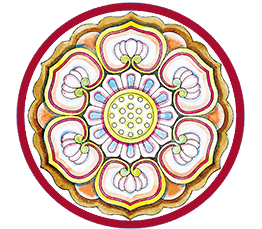Buddhism Q&A (9)
By Householder Fo'en
Q28 : Please give a brief introduction to the history of Buddhism in China.
A: The propagation of Buddhism in China was closely associated with the translation of Buddhist scriptures. The Han Dynasty saw the earliest stages of translation. The texts rendered can be divided into two main categories. The first was Theravada scriptures, represented by translator An Shigao of Parthia; they focused primarily on the Agama and Dhyana (meditative) teachings. The other was Mahayana texts, represented by Lokasema of Kusana. Their main emphasis was the Prajna-paramita sutras and Pure Land faith.
Q29 : At that time, did any Chinese monks travel westward in search of the Dharma ?
A: Yes. The earliest ones were Kusana and Zhu Shixing. They also translated quite a few scriptures.
Q30 : Were there other Chinese monks who made contributions to Buddhism?
A: By the Eastern Jin Dynasty (317-420), Buddhism was widespread in China. The most outstanding figure was Master Dao'an. As China's earliest enthusiastic propagator of Buddhism, he sent his followers to various parts of the country to teach the Dharma. He also founded the first monastic sangha in China. He diligently sought precepts to supplement deficiencies in Vinaya, and set rules and rites for monks and nuns to follow on a nationwide basis. Upon taking monastic vows, Chinese monks and nuns style themselves "Shi" (Shakya) in place of their former surnames. This practice was first advocated by Master Dao'an. He collected and collated Buddhist texts already translated, and compiled the first bibliography of Chinese Buddhism — Jinglu (Bibliography of the Sutras). Master Dao'an was the first person to summarize his experience translating Buddhist scriptures. He classified all sutras into three parts -- introduction, main body and circulation section. This method remains in use today. Under his supervision, many important scriptures were translated and numerous scholars and translators gathered together. Such efforts provided favorable conditions for the later large-scale translation work of Kumarajiva.
Another outstanding figure of the time was Master Faxian. In 399, aged 65, he set out from Chang'an to seek the Vinaya. Crossing deserts and mountains, he walked thousands of miles. He traveled all over northern India, visited numerous holy sites, learned Sanskrit and transcribed scriptures. He went as far as Sri Lanka and returned to China through Indonesia. The trip took Faxian 15 years and he visited 30 countries. He was 80 when he reentered China, but still translated scriptures. Besides precious sutras, Master Faxian brought back the complete Mahasamghika Vinaya and Mahisasaka Vinaya, fulfilling his own aspirations. In addition, his travelogue A Record of Buddhist Kingdoms contained much valuable historical material on the regions west of China. It has been translated into many languages.
Characteristics
- Recitation of Amitabha’s name, relying on his Fundamental Vow (the 18th)
- Rebirth of ordinary beings in the Pure Land’s Realm of Rewards
- Rebirth assured in the present lifetime
- Non-retrogression achieved in this lifetime

The 18th Vow of Amitabha Buddha
If, when I achieve Buddhahood, sentient beings of the ten directions who sincerely and joyfully entrust themselves to me, wish to be reborn in my land and recite my name, even ten times, should fail to be born there, may I not attain perfect enlightenment. Excepted are those who commit the five gravest transgressions or slander the correct Dharma.
Guiding Principles
Faith in, and acceptance of, Amitabha’s deliverance
Single-minded recitation of Amitabha’s name
Aspiration to rebirth in Amitabha’s Pure Land
Comprehensive deliverance of all sentient beings
